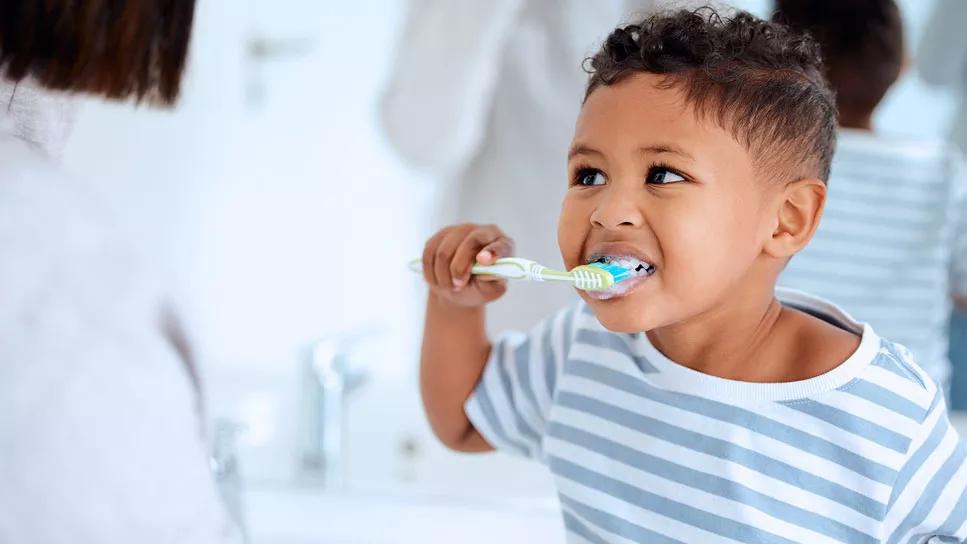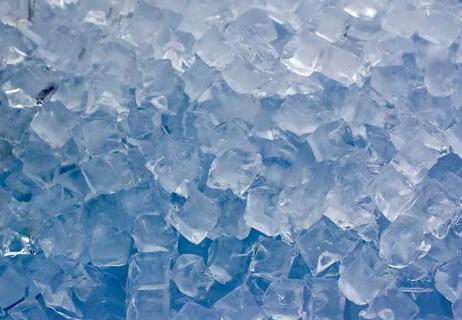Help and encourage them to brush and floss regularly, limit sugary foods and get routine dental checkups

A toothy grin, belly laugh or know-it-all smirk: A child’s smile is one of the many joys of parenthood. But a cavity is nothing to smile about.
Advertisement
Cleveland Clinic is a non-profit academic medical center. Advertising on our site helps support our mission. We do not endorse non-Cleveland Clinic products or services. Policy
By age 8, more than half of children in the U.S. have had at least one cavity, according to the U.S. Centers for Disease Control and Prevention (CDC).
“Tooth decay can start as soon as a child gets their baby teeth,” says dentist Anne Clemons, DMD. “Taking care of your child’s teeth from day one can prevent cavities. It also sets the stage for healthier teeth in adulthood.”
She walks us through the basics of cavity prevention and offers tips and tricks to make oral hygiene automatic for your little one.
A cavity is an area of tooth damaged by decay. Tooth decay happens when the bacteria in your mouth combine with food and saliva to produce a sticky film (plaque). Acid in the plaque wears down the outer tooth layer (enamel), eventually creating a cavity.
The main symptom of tooth decay is sensitivity when eating or drinking foods and beverages that are hot, cold or sweet. But that’s going to happen to every child.
“People experience pain differently,” explains Dr. Clemons. “Some people have a high tolerance to pain, while others are very sensitive. And even if they are in pain, children may be unable to describe exactly what they’re feeling.”
You can sometimes spot signs of a cavity. Early tooth decay typically appears as a small white spot. As the cavity develops, the spot turns color — from a light tan to a darker shade of brown.
Advertisement
These spots are easier to see on the surface of the tooth, says Dr. Clemons. Cavities that form between teeth, on the other hand, are only visible with the help of X-rays.
But not all color changes in children’s teeth are cavities. Tooth discoloration can also be due to genetics, injuries or certain medications.
Kids typically lose their baby teeth between ages 6 and 12. So, does it really matter if your kiddo has cavities?
Yes. Yes it does. Unless a tooth is about to fall out, cavities need treatment.
For small cavities, a sealant or silver diamine fluoride (SDF) applied to the tooth surface can prevent cavities from growing. SDF is an effective treatment (yay!), but it turns the tooth black (boo!).
Treatment for larger cavities may involve a filling, crown or even pulling the tooth. These dental procedures can be challenging for children and lead to dental anxiety. (Of course, your child’s dental team will take steps to make the experience as comfortable as possible, including using a medicine like novocaine to numb their mouth.)
But there are no easy fixes or home remedies for cavities, says Dr. Clemons. If your child has a cavity, a dentist will need to take care of it.
But there’s good news: You and your child can take several steps to prevent cavities from forming.
As your child grows, their dental needs change. But one thing’s for sure: They’re always going to need to have good oral hygiene. Early on, you can help your child set a healthy dental routine. It’s hard work, but the benefits will last their entire life.
Here are four ways to help prevent cavities in your child:
Brushing and flossing help get rid of the plaque and acid that cause cavities. But when exactly should you start dental care?
The earlier, the better.
Dr. Clemons recommends these strategies for young children, starting at birth:
As your child gets older, it’s tempting to let them brush on their own. “Kids need supervision longer than you might think,” says Dr. Clemons. “The coordination it takes to properly brush doesn’t develop fully until elementary school. A good rule of thumb is to supervise your child until at least age 8. Every kid’s different, so some may need supervision for a lot longer.”
Advertisement
Of course, not all kids love brushing their teeth, so make it fun:
The bacteria that cause tooth decay thrive on the food your child eats. Foods that contribute to tooth decay include:
It can be challenging to limit these foods, but it’s worth the extra effort. Try trading sweet and salty snacks for healthier choices. For example, instead of soda or fruit juice, give your child water. Instead of sugary snacks, reach for healthy snacks that are low in sugar and high in protein, fiber and healthy fats.
But what if your little one isn’t eating solid food yet? Unfortunately, you still aren’t off the hook.
Even before babies start eating solid food, they can develop cavities. That’s because most early cavities occur when a baby has a bottle at night.
“The liquid in the bottle can sit in a child’s mouth for hours,” notes Dr. Clemons. “If that liquid is anything but water, it’s a recipe for rapid tooth decay and cavities.”
Advertisement
Babies aren’t born with cavity-causing bacteria in their mouths. A common source of those bacteria is your mouth. You introduce your oral bacteria into your baby’s mouth when you do things like share utensils and cups.
Your baby may get those bacteria eventually, says Dr. Clemons, but you can slow that process down by not sharing your saliva.
“We think that avoiding early colonization could impact the type of bacteria colonizing a child’s mouth for years to come. It may be that if they can avoid this early exposure, they can have a lower cavity rate for life,” she explains.
Children should have their first dental appointment after their first tooth comes in or by age 1 — whichever comes first. After that, Dr. Clemons recommends checkups every six months.
Routine visits help your child develop a good relationship with their dentist. They also allow your dentist to:
Working with your dentist, you can help your child create good habits and a positive attitude about their dental health that will last a lifetime.
Advertisement
Learn more about our editorial process.
Advertisement

Start weaning your toddler off daytime pacifier use by 12 months old to help prevent dental issues and speech delays

At-home products like whitening toothpaste, rinses and strips can bring bright results

Keep the nail file out of your mouth and leave any tooth shaving up to your dentist

Act quickly to increase the chances that your tooth can be saved

You can do damage to fillings, crowns and even your teeth themselves

No, oil pulling and vitamin D won’t fill or fix a cavity

Cavities, grinding or even a sinus infection could be behind your tooth pain

How your teeth and gums can alert dentists to other health problems

Start having sex about 72 hours before ovulation, then at least every other day during your fertile window

Attachment theory suggests that your earliest relationships shape connections throughout your life

It isn’t a recognized mental health disorder, but research shows that problematic social media use can negatively affect your mental health, self-esteem and sleep